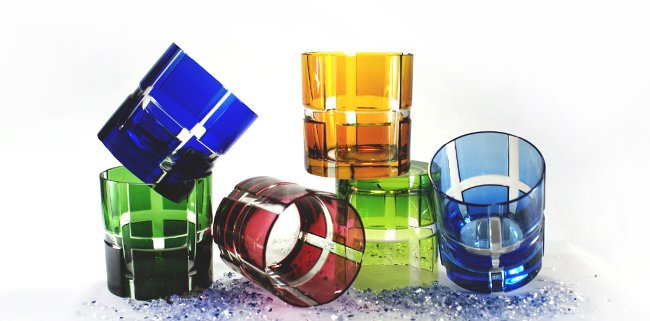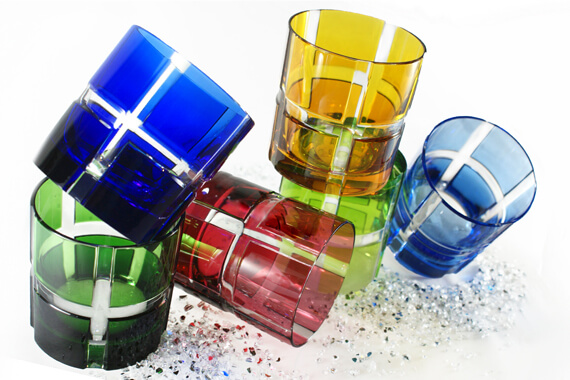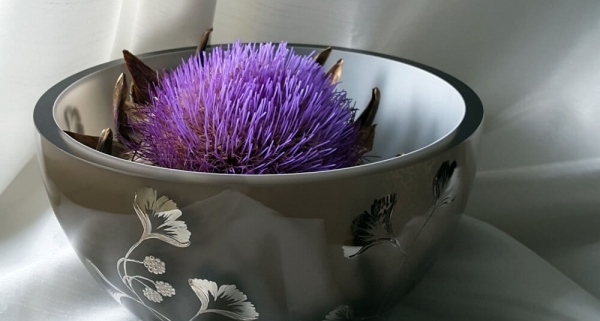How overlay glass is made
Have you ever wondered with what the glasses are colored? Our glasses from the series Quadrone and Quadro are made of real overlay glass and mouth blown.
The molten glass must be mixed with metal oxides for this purpose. Red glass is colored with gold, amber glass with silver, blue with cobalt, green with iron and chrome. The color is therefore already present in the molten glass and is not painted or sprayed on later. That is why it does not wash off. This is then called genuine “overlay glass”.
Now it gets complicated: To achieve the two-tone effect, another layer of colored glass must be fused on top of a crystal-clear layer of glass. This is a very difficult task for the glassmakers. First, a crystal clear “Kölbel” is made, which is a small glass bubble. This glass bubble is then dipped into the colored melt, the two layers fuse together but do not mix. This cannot be done by one glassmaker alone, it takes a whole team of at least five glassmakers and helpers.
Our series Ginkgo, Balloon and the colored Pure vases even have three layers of glass on top of each other, inside opal glass, then crystal glass and outside colored glass. This makes these vases and bowls so wonderfully intense in color.
In this picture, you can clearly see the layers of glass on the cut edge of the bowl.
When the glass is cut, the “Glaskugler” (that’s what we call the people who cut patterns on the glass) grinds off the outer (colored) layers and the glass then looks two-tone.
These techniques of glass making and processing have been around for hundreds of years. We are happy that there are still glassworks that produce such extraordinary glass for us.
Petra Maria Schütte

 OertelCrystal
OertelCrystal


